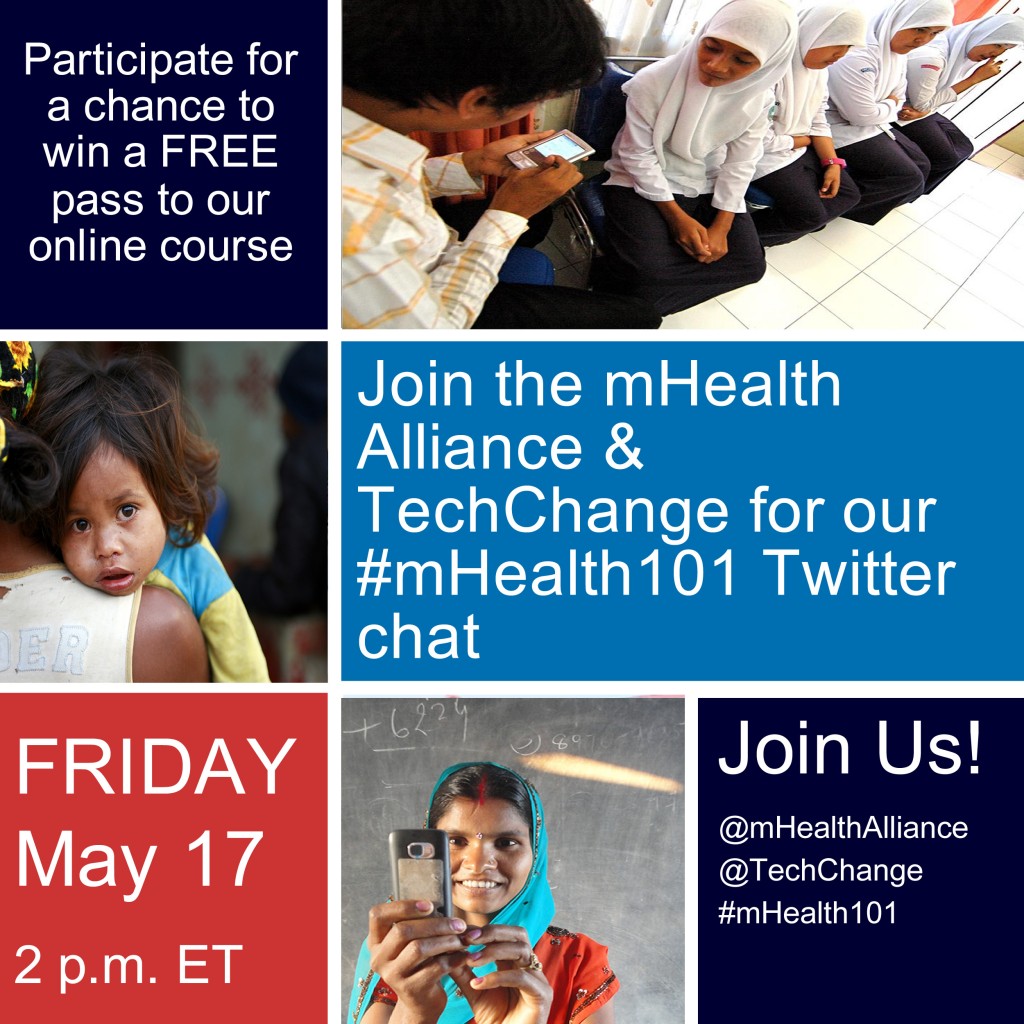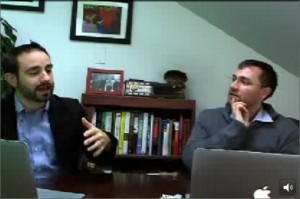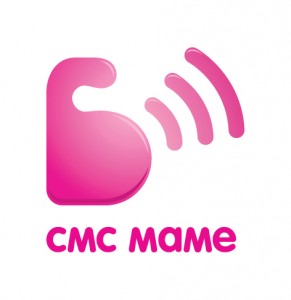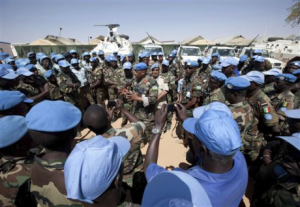Our mHealth: Mobile Phones for Public Health Online Certificate course will run for its second time from June 3rd – 28th and we couldn’t be more excited about it. Along with The mHealth Alliance, we have had six months to reflect on course feedback and refine curriculum to make sure we are offering the most comprehensive and enjoyable online instruction possible.
Twitter Chat Contest:
Want to win a free seat? Then join us for a Twitter chat using #mHealth101 on Thursday, May 17th at 2 pm EDT to be entered in a random drawing! @Techchange and@mHealthAlliance will be co-hosting the event and will be discussing course curriculum, mHealth trends, and case studies. More details to come but tweet at @TechChange or @mHealthAlliance if you have questions and we look forward to having you join us!
What is the Course Structure?
Students will have the opportunity to engage directly with leading applications developers, and learn from practitioners who have had significant experience in implementing mobile phone based communication systems around the globe.
The entire course is delivered online. The total time commitment is a minimum of 2-5 hours a week. The course is designed to be highly interactive and social, but we also work hard to ensure that the majority of the content can be experienced in a self-paced manner. It will feature one or two real-time interactions each week, such as live discussions, live expert interviews, and live simulations. In order to accommodate busy schedules of mission staff from around the world, we’ve set up a learning environment where participants have plenty of options to explore content that is most relevant to them through live content and interactions, readings, and videos.
Facilitators will produce weekly audio podcast recaps for participants to catch up on key conversations and topics. Participants can also access all course content six months after course completion so the material can be revisited later.
Schedule:
● Week 1: Introduction to Mobile Health
● Week 2: Strengthening Health Systems
● Week 3: Moving Towards Citizen-Centered Health
● Week 4: Large Scale Demonstration Projects
For even more information about the course, visit the course page or take a look at the syllabus. To make sure you get a seat, fill out an application here and get enrolled.



 HDF’s first national mHealth program was
HDF’s first national mHealth program was 
 What communication technology and social media does is provide more individuals with the ability to tell a story. These stories may be the same as the official account, or may deviate jarringly and in ways that make understanding the motivations of those involved in the fighting (or civilians trying to survive) harder to decipher. In this space we see a key different between social media and communication technology in a disaster versus a conflict zone, and making the most of the technology requires recognizing this difference: in a disaster we use technology to respond to the situation, in a conflict we have to use it to understand the situation. While the volume of stories can seem overwhelming if we can learn to listen more efficiently to the information from those we wish to help their stories can start to inform and increase the effectiveness of our peacebuilding efforts.
What communication technology and social media does is provide more individuals with the ability to tell a story. These stories may be the same as the official account, or may deviate jarringly and in ways that make understanding the motivations of those involved in the fighting (or civilians trying to survive) harder to decipher. In this space we see a key different between social media and communication technology in a disaster versus a conflict zone, and making the most of the technology requires recognizing this difference: in a disaster we use technology to respond to the situation, in a conflict we have to use it to understand the situation. While the volume of stories can seem overwhelming if we can learn to listen more efficiently to the information from those we wish to help their stories can start to inform and increase the effectiveness of our peacebuilding efforts.